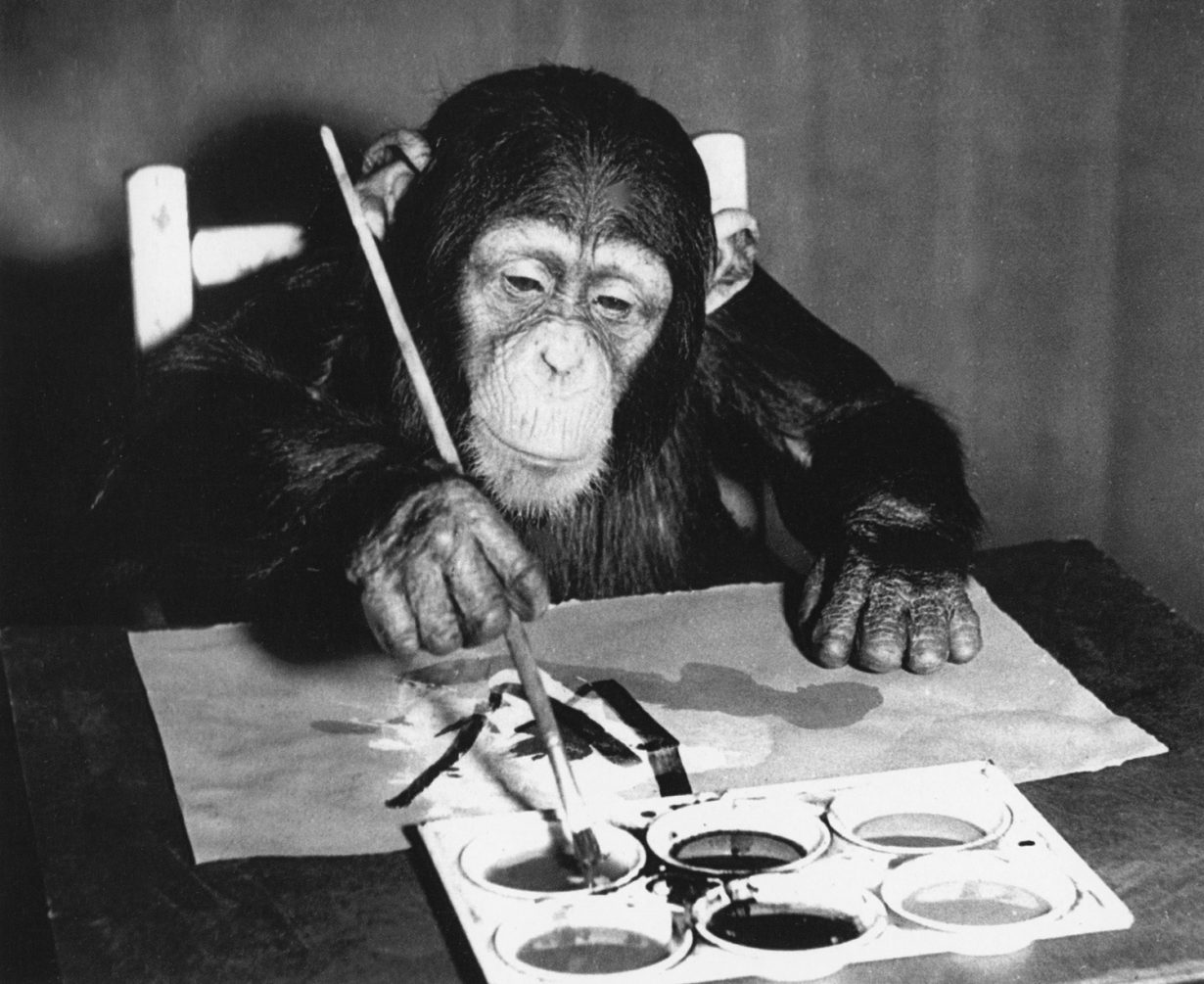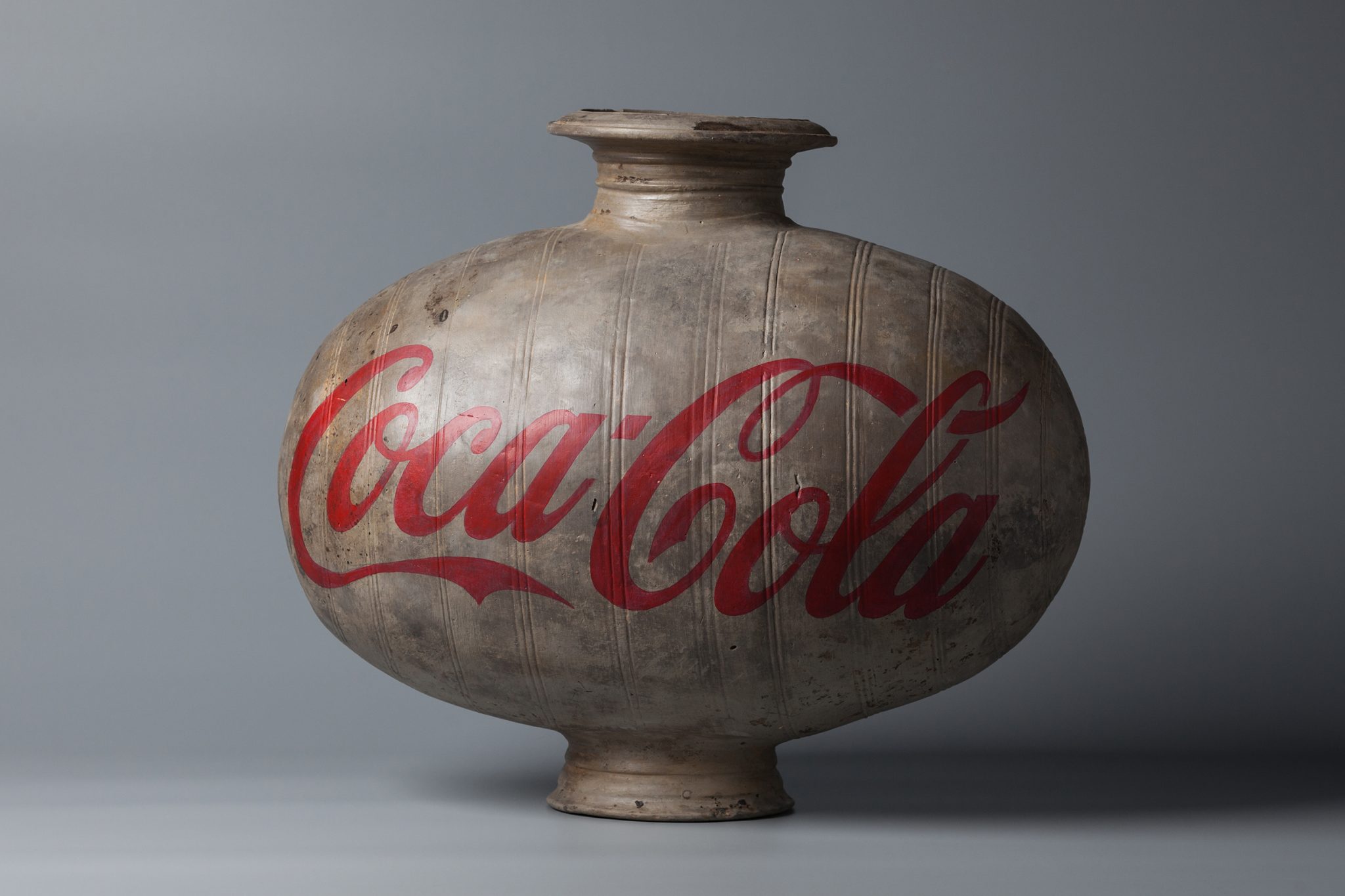What Plato, Walter Benjamin, Theodor Adorno, Werner Herzog, Iris Murdoch, Ai Weiwei, and Canadian comedian Nathan Fielder might teach us about artmaking and authenticity
As we all know, the way we see art is always bound up with the notion of authenticity. In the most obvious example: ‘fake’ paintings, that are known to be fake, have next to no value; a ‘real’ one, or one believed to be real, might in some cases be worth hundreds of millions of dollars. Wealthy collectors need to feel the assurance that this object they own was touched by the hand of the master; scholars need to know that it was really produced at the point in art history that it purports to have been. A genius is no longer a genius if they are discovered to have plagiarised from somebody else. The real object is one and only one thing: a fake, by contrast, might be infinitely replicable. Anyone can right-click on a jpeg of an ape, but you can get hundreds of thousands of dollars for one if it was minted on the blockchain.
There is at least some measure of cognitive dissonance here. Art involves making things up. But we also long to feel assured that its invention is not merely fanciful: that a given object might turn some gears with social, physical, historical reality. Imagining stuff is great: we can imagine anything we want to. I can sit here and imagine a man whose hands are replaced by wolves; a woman who can only hear the buzzing of bees, whenever she sees the letter k. I can imagine a lamp as an overworked doctor, working in the NHS; a spoon as Director-General of the BBC. But a funny story might only be funny, if we believe that it really occurred. The image of a spoon as BBC DG is merely silly – but imagine if the government actually put a spoon in charge of the BBC. Imagine how strange that would be, imagine what you’d think. Imagine the political fallout from such a move. Imagine remembering that it happened, years later. You know: did they actually? Does anyone remember this? Is the spoon still in charge? How did this even work? Did the government actually make a spoon the Director-General of the BBC?
But any easy dichotomy between the ‘real’ and the ‘fake’ is likely to be shallow. Ai Weiwei’s exhibition The Liberty of Doubt, currently on at Kettle’s Yard in Cambridge, pairs authentic historical Chinese artefacts with forgeries. But of course all this ends up doing is producing a new range of ‘real fakes’ – the real fakes that were actually produced by the master, Ai Weiwei. If I had the pottery skills I might forge a forgery, and pass it off as an authentic Ai fake. Hence why many of the most important philosophical aestheticians of the twentieth century were drawn to bulk out the notion of authenticity in art with a bunch of other different, perhaps more fundamental concepts.

Werner Herzog’s notion of ‘ecstatic truth’ is helpful here: if the point of art is to teach us things we don’t already know, to de-centre ourselves from ourselves and with this to show us something fundamental about the truth of our world, then the artist cannot be permitted, in Herzog’s words, to ‘confound fact and truth.’ The facts are already known – the truth, what is ‘really real’: that is what is beyond us. As (notoriously) in Herzog’s own documentaries: what is ultimately true might thus be best served by ‘fabrication and imagination and stylization.’
Walter Benjamin spoke of ‘aura’ as the power ostensibly ‘authentic’ artworks have over us, and which was in his time, he thought, being eroded by the possibility of said artworks’ mass reproducibility – a development which he believed was an essentially good thing: the democratisation of art (Benjamin would have been dismayed by the advent of NFTs). For Theodor Adorno, all artworks, authentic or otherwise, were enigmatic: what this enigma demands is philosophical reflection, to solve the riddle that any particular art object poses; to determine its ‘truth-content’. To figure out, in short, what any given work of art is trying to tell us about the world. For Adorno, art fails when it tells us something untrue – ‘Great artworks are unable to lie.’ This thought chimes with one from Iris Murdoch, namely that the point of art is to take us in some sense beyond ourselves. ‘Good art reveals what we are usually too selfish and too timid to recognize, the minute and absolutely random detail of the world.’
In a way though, all of these ideas can be traced back to the work of the man who was perhaps the very first thinker to be troubled about the power of art to mislead: Plato. The famous ‘Cave Allegory’, from Republic, gives us the image of the illusory world of mere appearances (the shadows that appear before the prisoners, playing on the walls of the cave), which contrasts with the ‘real’ world of the forms (the world outside the cave, which one of the prisoners suddenly finds themselves taken to by force). But the reason why the Cave Allegory has proved so philosophically enduring is not that it presents us with this sort of simple distinction between appearance and reality, but that it shows us just how much of a struggle it is to make sense of it. After all: when the freed prisoner returns to the cave, to tell his former brethren about the wonderful world that exists beyond their chains, the first thing that Plato thinks his audience are likely to do is to try and kill him. The truth is not remotely easy: it is something that both exists within, that must be validated in and through a given social context, while also standing necessarily in tension with any society as it actually exists.
In the cave, the prisoners see things illuminated by their fire, which misleads; outside of it, they see things illuminated by the sun, which reveals things as they really are. But what might ‘the sun’ here be, for us? In Plato, it is supposed to be the Good – but what could that actually, possibly mean, to see things in the light of the good? There is a risk of circularity here: things are real when they are real, and fake when they are not.

Iris Murdoch struggled with this question herself. Towards the end of her most enduring philosophical work, The Sovereignty of Good (1970), she suggests that, of the many concepts we might fill ‘Good’ with, perhaps the best candidate we have is Love (by which Murdoch seems to mean something more like Christian neighbour-love, than self-assertive, erotic love). We are human, Murdoch notes – we are fallible. We cannot always see things right, or well; we can barely even hope to. But we can always strive to see things Lovingly: to see ourselves, and others, in their best light; to refuse always to be led astray, by what might otherwise consume us – by mutual suspicion, our own insecurities, and petty grievances. Sometimes, yes, this might go wrong – and sometimes love can itself distort and mislead. But it’s the best thing we have to go on.
In terms of contemporary artists, however, the modern master of the appearance-reality distinction is not Ai Weiwei. For my money, it’s Nathan Fielder. I’ve been thinking about the Canadian comedian recently for no better reason than that I spent the past month or so watching his 2013-2017 Comedy Central series Nathan For You – a satirical faux-docu-reality show – all the way through.
Nathan For You started out with funny episodes in which the awkward, incompetent Fielder (who interacts with real people, while playing a fictionalised version of himself) ‘helps’ small businesses by drawing on the expertise he has ostensibly accrued as a result of graduating from “one of Canada’s top business schools, with really good grades” (Fielder did actually study Business at the University of Victoria). In the first episode, for instance, Fielder convinces a frozen yoghurt place to start serving a new yoghurt flavoured like poo.

Throughout the show’s run though, Fielder – perhaps struggling against the difficulty of convincing any actual business owners to go along with his ridiculous ideas – gets more and more interested in the relationship between the pranks he is staging as part of his TV show, and the actual reality that exists beyond them. In early episodes, this means staging stunts, like faking a cute viral video to promote a petting zoo, or exploiting a loophole in copyright law to open a parody Starbucks (both these stunts end up making the actual news). In later episodes though, Fielder’s fakes start having less and less to do with promoting any actual businesses: in one episode, he commissions a ghostwriter to produce an autobiography of a body-builder he wants to pass off as having gotten in shape solely by lifting furniture, in order to convince a moving company that he can exploit a fitness craze to supply them with free labour; in another, Fielder’s efforts to promote a restaurant by having a Michael Richards impersonator leave an unusually generous tip there end up necessitating that he start a fake newspaper called The Diarrhoea Times.
All of this culminates in the show’s last and best episode: the hour-and-a-half special ‘Finding Frances’ (2017). In ‘Finding Frances’, Fielder decides to help Bill Heath, a 78 year-old Bill Gates impersonator who has been roped into his pranks before, reconnect with his “long-lost love,” a woman named Frances Gaddy, who he abandoned as a young man in his home town of Little Rock, Arkansas, in order to pursue his dream of becoming a Hollywood actor. On the surface at least, Heath’s story is a powerful one: of love and loss undying for some 50 years; of regret and of a hope that refuses to die. But Heath is a strange presence: stiff and evasive, vague on any of the real details about his relationship with this woman. And early on, it becomes clear that in his dealings with Fielder at least, he has always been a fake: he has never been a professional Bill Gates impersonator, he just pretended to be one to get on TV. Heath himself is a forgery of a forgery, a fake of a fake. He does not seem to know how to be, honestly, in the world: with him, nothing is ever quite real.
Fielder and Heath travel to Arkansas, where they struggle to uncover any information about Frances, while Fielder finds it increasingly difficult to be sure about any of Heath’s real motivations. At one point, he decides to hire an escort to take Heath on a date, in order to address the doubts that are beginning to grow in Fielder’s mind about how Heath relates to women. On learning that the woman he’s being set up with is a sex worker, Heath refuses to see her – and so Fielder decides to meet her instead.

What then follows is one of the strangest sequences in recent television history, as we see Fielder, filming an episode of his show in which he fakes things, which is focused on a fake man’s (possibly fake) long-lost love, meeting a woman whose job is effectively to pretend, to lonely men, that she’s their girlfriend, and going on a date with her… and then another… and then another… and then for all intents and purposes seeming to fall in love with her, as they meet in private in Fielder’s hotel room, and share a kiss, but with the cameras on, and they both clearly know that what they’re doing is for a show. Fielder seems to shed some layer of his usual on-screen persona, and he is seen with the escort, Maci, acting not like the usual stiff, awkward character he portrays, but as you imagine he might be in real life: making wry jokes, casually performing magic tricks – honestly attempting to charm her.
And the effect of all this is utterly vertiginous. It is like looking at the televisual equivalent of an Escher painting: from no perspective can you quite make out what is really going on here. Is Maci actually an escort from Little Rock, Arkansas, who Fielder has repeatedly hired for his production, presumably at her usual rates – or is she an actress, playing one? Did Fielder actually develop feelings for this woman, or was he just pretending to, for the purposes of his TV show? Why is he even showing us any of this, anyway? And frankly – is any of this OK? Is this not horribly exploitative of everyone involved, including perhaps even Fielder himself?
I doubt that any of this was designed with the idea of refuting Iris Murdoch in mind, but if it was – bravo. ‘Finding Frances’ is about Love – where Love features throughout, almost exclusively, as a force of distortion. Heath’s ‘love’ for Frances is little more than a thin veneer of self-denial: he has never married, he has never had children, he has never been a success – his memory of Frances is all he has left, to prove to himself that he hasn’t completely wasted his life. Nathan’s ‘love’ for Maci, meanwhile, is something else entirely: a relationship which seems very real, when you watch it on the show, but which we also know, as an audience, is never going to be allowed to have its visas stamped, as it were, by the guards who lurk at the borders of reality.
So what are we to make of this? Do we, ultimately, have any way of making sense of reality at all? This much, at least, seems to be right: people like Bill Heath – people who live in denial of themselves – are only capable of distortion. Bill Heath is a failed actor; and he would also be a bad artist. Maybe honest people, by contrast, are capable of genuinely telling us things: of portraying things as they are. But then the question is: how might we ever know, that we’re really being honest with ourselves? Nathan Fielder, for instance – does he know this? Does any artist, that sets out to manipulate the distinction between appearance and reality in clever ways? (Does Werner Herzog?). How can we ever really be sure, that we’re one of the real people, and not the fake ones?
